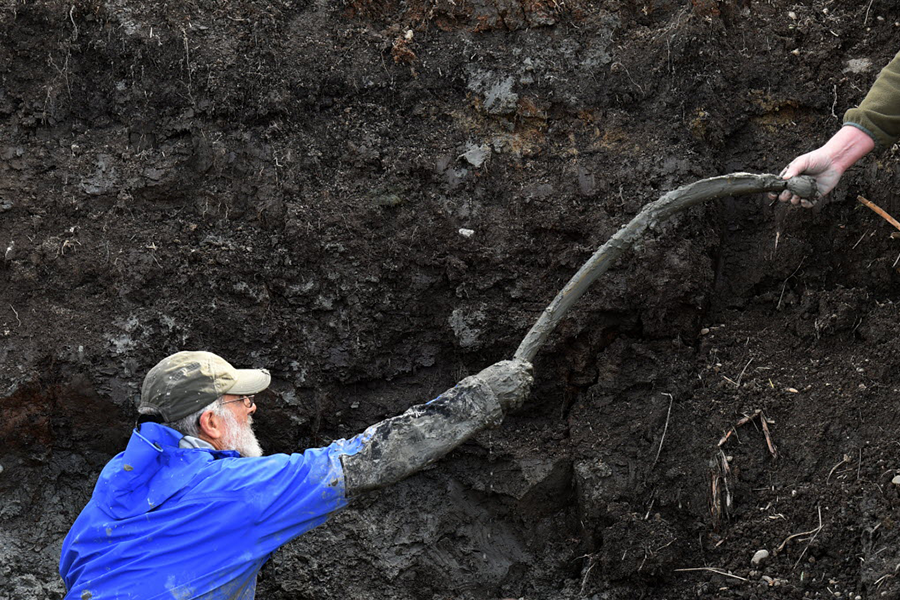What will we learn from mammoth exhibit at Univ. of Michigan?
Visitors who travel to one University of Michigan museum next year could have a very different experience than people who visit this year, museum officials say. And that’s a good thing.
Starting on Saturday, visitors to the University’s Museum of Natural History will have the unique opportunity to watch the excavation and examination of an ancient mammoth as it unfolds. Researchers who have worked on the project since the mammoth was discovered in 2015 say that it is an unusual and interesting specimen.
"This exhibit is really about viewing research as an unfolding process of discovery," said museum director Amy Harris in a statement. "We don't find all the answers right away. It takes time to pursue lines of investigation."
The mammoth, also known as the Bristle mammoth for the farm on which it was found, was discovered in a Michigan field in 2015.
When University of Michigan researchers examined the bones, they found that the mammoth likely lived between 10,000 and 15,000 years ago, around the same time as humans.
"What's so interesting about the Bristle site is that there's a mammoth with evidence of human association at a very early date – well before Clovis times," said paleontologist Daniel Fisher, who led the dig.
Evidence at the site suggests that humans hunted and killed the mammoth, then butchered it, leaving portions of the meat tied to boulders in a pond for storage. The positioning of leftover mammoth bones is likely indicative of human involvement, paleontologists say.
This mammoth could help paleontologists gain a better understanding of Michigan’s prehistory, as it suggests that humans interacted with mammoths in a predator-prey relationship about one thousand years before scientists originally thought.
Researchers will be able to confirm this finding after performing more thorough analysis of the site, including radiocarbon dating of various sediment layers.
“If we could get a series of dates from the sequence of sediments in the various layers, then the expectation would be that the lower ones would be older than the higher ones,” Fisher said. “And those radiocarbon dates had better come back from the lab in the expected order, or you're going to know that something is seriously wrong."
The Bristles, the family who owned the farm on which the mammoth was discovered, promptly donated the find to the University of Michigan, following the ancient beast’s excavation.
About 30 to 40 percent of the mammoth was recovered from the initial dig, including 50 to 60 nearly complete bones. Researchers hope to find more in subsequent digs at the site.
Public enthusiasm for the ongoing mammoth project is high – a crowdfunding campaign raised nearly $50,000 to help pay for the cost of the exhibit and research.
"The striking thing about this project is how incredibly excited people are about it. The community has shown more excitement about the Bristle Mammoth than any other project I can remember," says museum director Harris.
When the exhibit is unveiled this week, visitors will be able to view videos of the excavation, as well as a plaster cast of one of the mammoth tusks, and the real skull retrieved during the dig.







